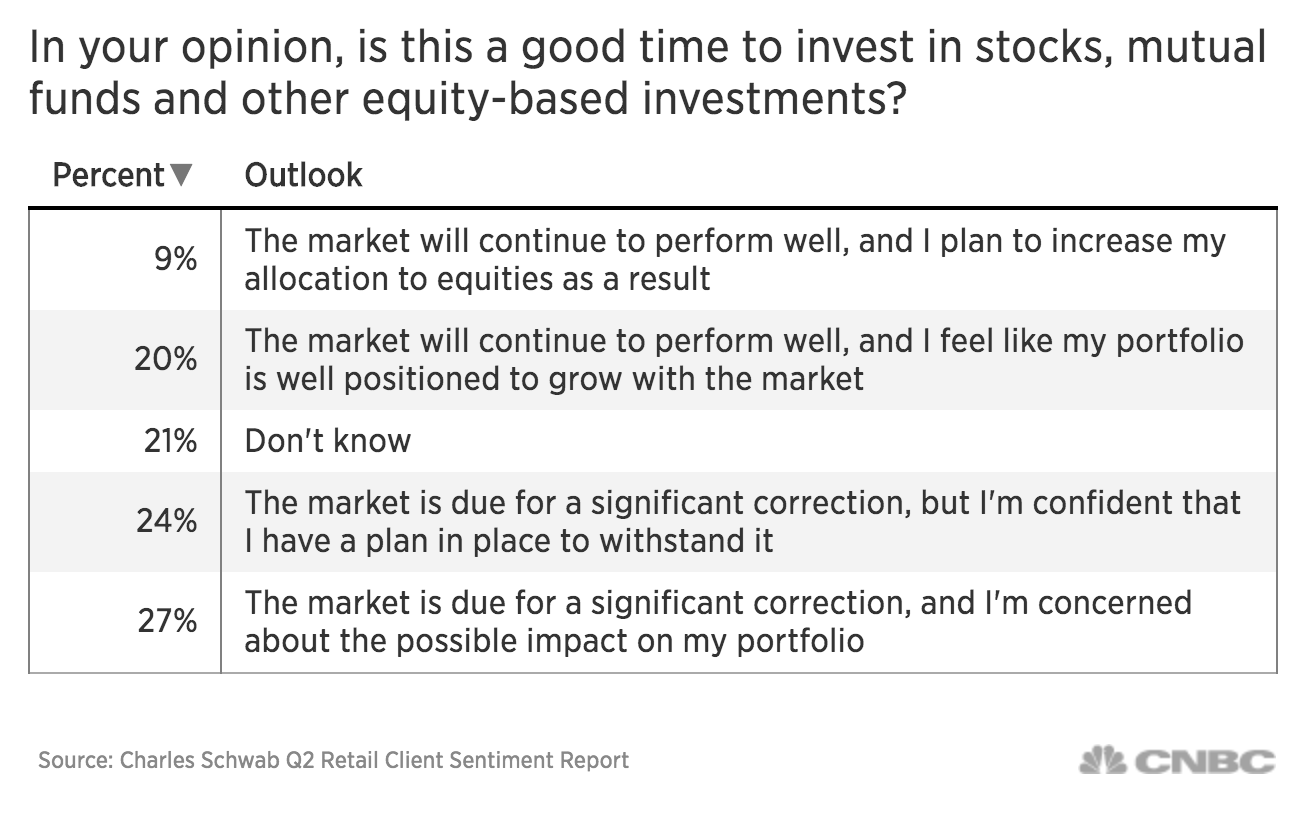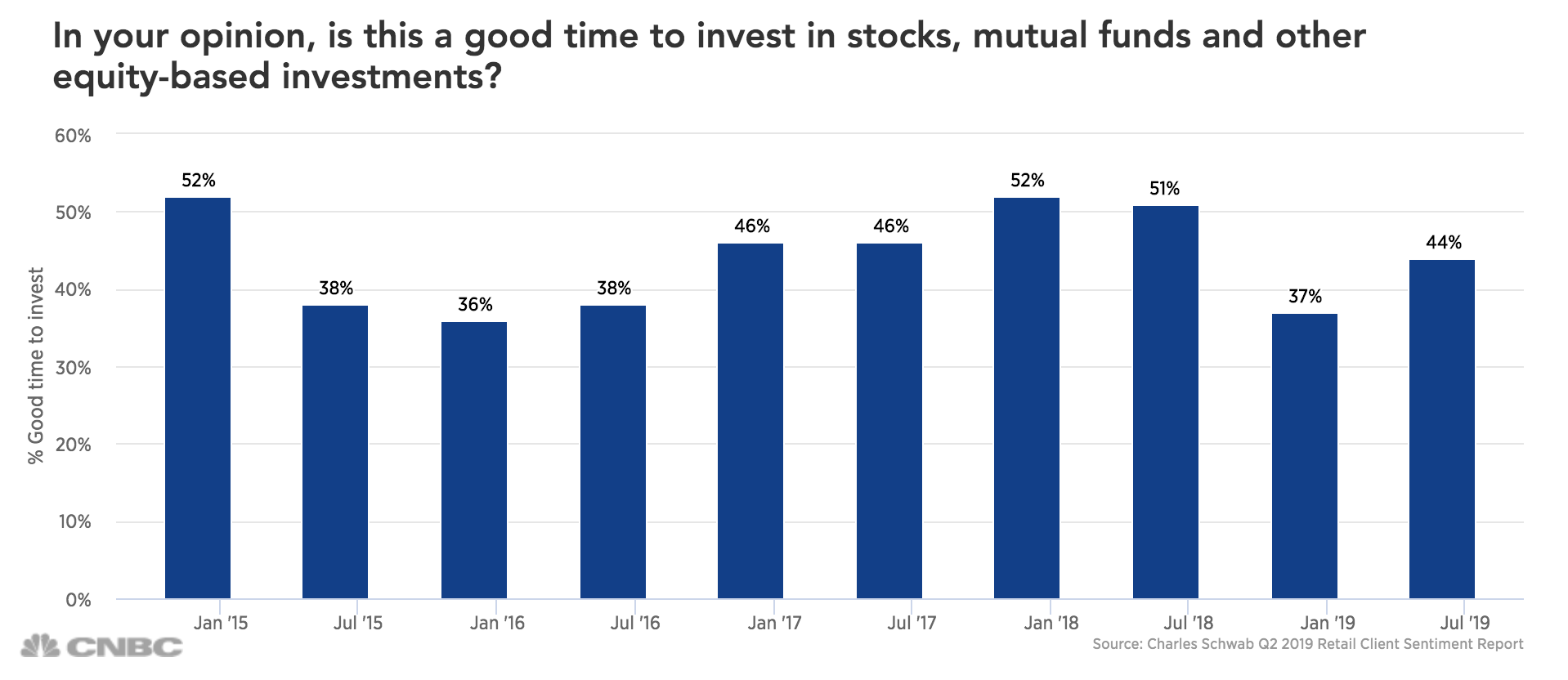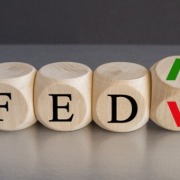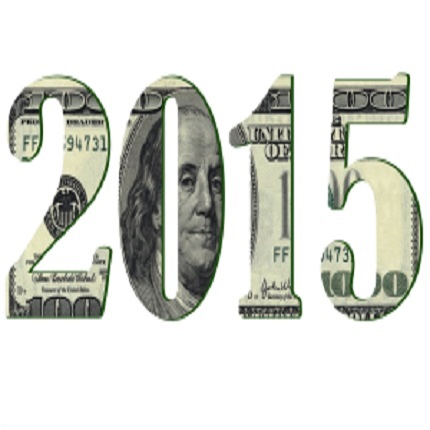Fed Rate Cut, Trade Wars: How To Know If You Have Too Much Risk In Your Portfolio
 With the Federal Reserve shifting its stance on interest rates, and major issues like China trade and Brexit still up in the air, there are plenty of reasons for investors to feel uncertain.
With the Federal Reserve shifting its stance on interest rates, and major issues like China trade and Brexit still up in the air, there are plenty of reasons for investors to feel uncertain.
Just take the recent market activity. After the Federal Reserve announced its first interest rate cut in more than a decade and subsequent comments by Fed Chairman Jerome Powell, the Dow Jones Industrial Average sank as much as 478 points before staging a recovery.
The drop came after the DJIA and S&P 500 crossed record highs at 27,192.45 and 3,025.86, respectively. What’s more, the traditional 60/40 portfolio mix of stocks and bonds has outperformed this year.
That runup may have tempted some individual investors to ratchet up their stock allocations. Or, if you’ve had a set-it-and-forget-it approach, your portfolio could have drifted to higher risk exposure than you originally intended.
Charles Schwab’s latest survey of retail investors shows a slightly bearish outlook for the U.S. stock market. The main reason: the political landscape. One-third of the retail clients surveyed said they expect an economic downturn within the next year.
“What I’m seeing most is this feeling of inertia and overwhelm based on potential future possibilities,” said Michael Liersch, head of wealth planning and advice at J.P. Morgan Private Bank. “We’re really encouraging clients to focus on their own goals, what they can control.”
That means it could be time to rebalance or check to see that your investment mix still lines up with your goals.

Reassess Your Appetite For Risk
The traditional 60/40 portfolio has done particularly well this year, and even over the past decade, but that may not last.
“Over the next five to 10 years, we are expecting lesser returns from both the stock and bond markets going forward,” said Julie Virta, senior financial advisor at Vanguard.
The S&P 500′s climb this year mirrors its performance in 1998, according to recent research from Bespoke Investment Group. If that year is any guide, the index could be in for big swings for the rest of the year.
At the same time, similar rate cuts made by the Federal Reserve in the 1990s helped push the S&P 500 up by more than 20% within the years those changes were made, according to a CNBC analysis.
How much exposure you should have to stocks depends on your personal situation. Things to consider include how much time you have until retirement and other goals, when you expect to start using the funds and your risk tolerance.
“If you’re under 50 and do not have imminent plans to draw down the money, you can probably afford to take more equity risk,” said Christine Benz, director of personal finance at Morningstar. “If you’re approaching retirement and plan to use the money soon, it does make sense to move some of that stock exposure to the safe part of your portfolio. Why not just harvest some of those gains and de-risk your portfolio at the same time? You have some peace of mind knowing that your near-term cash needs are there.”
Keep Inflation And Taxes In Mind
You do want to keep an eye on how inflation and taxes affect your bottom line before making any moves. Historically, inflation has been around 4%, Virta noted. So if you expect a 5% long-term return on bonds, that will limit how much room you have to spend, she said.
“Definitely a reason to keep stocks in your portfolio is to be able to mitigate or combat that inflation risk over time,” Virta said. “You also want to be sure to assess whether you have the right bond mix.”
“Even though yields are low, bonds are still a good diversifier and the first place where people should start,” said Jason Draho, head of Americas asset allocation at UBS Global Wealth Management. “But not all bonds are created equal. Making sure you’re picking the right category to help diversify is important.”

“If you’re increasing your equity exposure, look for bonds with longer durations or maturities that can help offset losses,” Draho said. “Treasury bonds can help to diversify equity risk.”
“Keep in mind that if you’re selling investments that have appreciated in a taxable account, that will trigger a taxable capital gain,” Benz said.
As you reposition your portfolio, try to focus on the tax deferred accounts like 401(k) plans that will not trigger a tax bill.
“Most of us already have the bulk of our assets in accounts where we won’t have to pay taxes to do repositioning,” Benz said.
Consider The Alternatives
As you reevaluate your positions, ask yourself whether you’re falling prey to common blind spots, such as wanting to invest more or timing the markets as they go up, Liersch said.
Instead, start by articulating your goals: what you want to accomplish and your short-, medium- and long-term time horizon. Then, make sure your overall strategy and risk exposure is in line with that plan.
“Filling that information based on your own circumstances is really critical to making the right financial decisions,” Liersch said.
It may sound counterintuitive, but sometimes the best course of action is to do nothing at all.
“People tend to want to take action because we’re at this quote unquote moment in time, so it feels like I have to do something,” Liersch said. “Making the decision to stay invested is also an action, too. While many investors like to go it alone, there is one way to check your strategy: Run it by a friend, family member, spouse, significant other or advisor. It helps you challenge your own perspective and your own biases or myopic perspectives on what’s happening. Getting that feedback, especially contrarian, can be very useful.”
Source: CNBC


